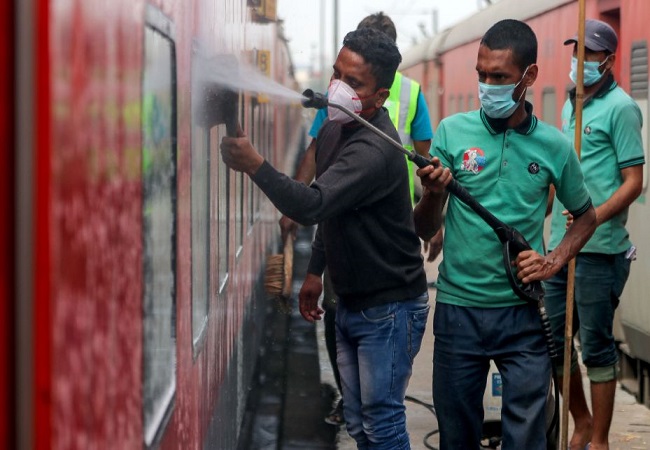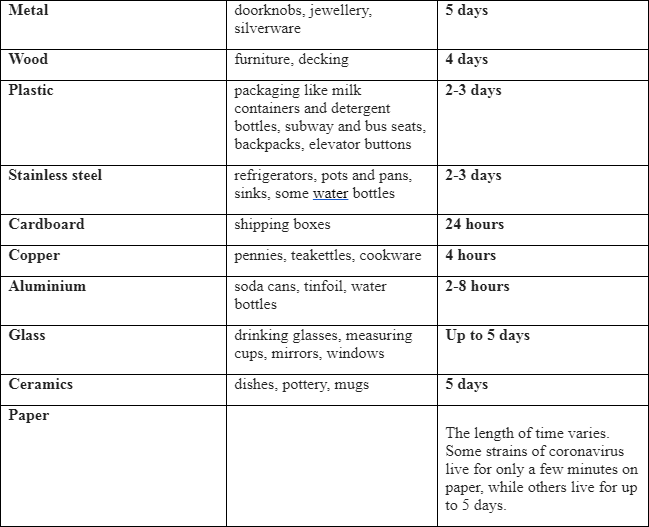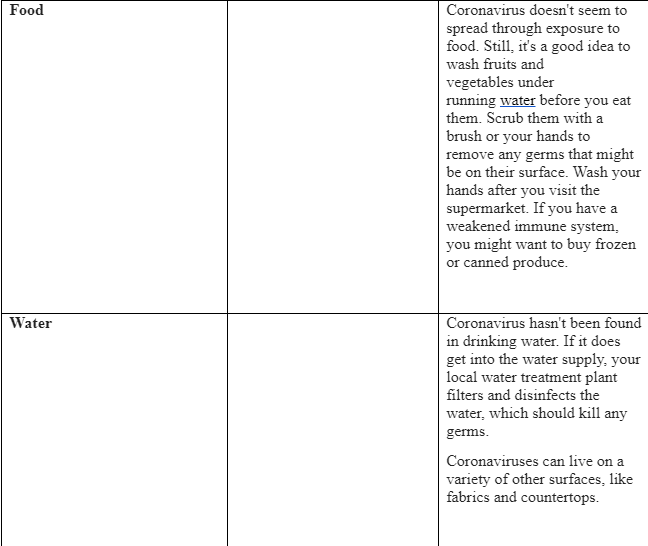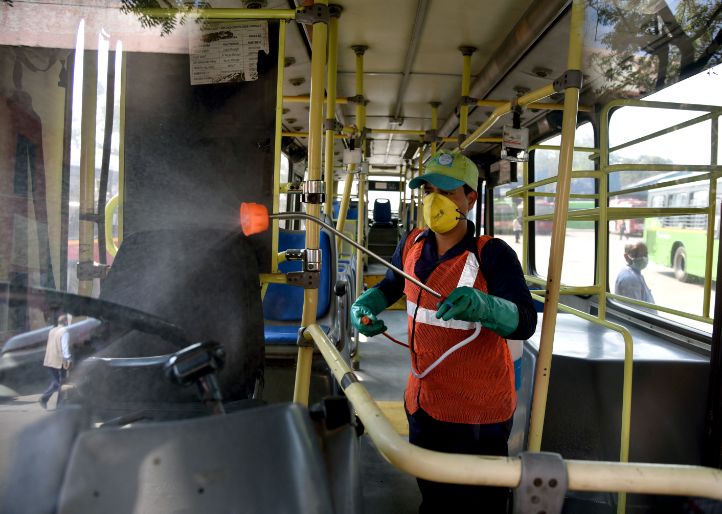
Railway workers clean coaches as a preventive measure against COVID-19 , coronavirus

— By Dr KK Aggarwal
As the Coronavirus pandemic grips the entire world, researchers and experts are working round the clock to study the structure, composition and transmission of virus. It is well-established that it’s not an airborne disease but is getting transmitted through droplets of sneezing or coughing.
The viability of this virus on various surfaces can be an effective tool in its containment. Accordingly to its lifespan on surfaces, one can take adequate precautions.
Here is a list of materials on which this virus can survive for how longer time:
According to experts, the virus lives longest on plastic and steel, surviving for up to 72 hours, however, its viability decreases sharply over time.


To reduce your chance of catching or spreading coronavirus, clean and disinfect all surfaces and objects in your home and office every day. This includes:
Countertops
Tables
Doorknobs
Bathroom fixtures
Phones
Keyboards
Remote controls
Toilets
Use a household cleaning spray or wipe. If the surfaces are dirty, clean them first with soap and water and then disinfect them.
Keep surfaces clean, even if everyone in your house is healthy. People who are infected may not show symptoms, but they can still shed the virus onto surfaces.

After you visit the drugstore or supermarket, or bring in takeout food or packages, wash your hands for at least 20 seconds with soap and warm water. Do the same thing after you pick up a delivered newspaper.
Added
Porous hospital materials, including paper and cotton cloth, maintain infectious SARS-CoV for a shorter time than non-porous material. [(U) Lai, M. Y.; Cheng, P. K.; Lim, W. W., Survival of severe acute respiratory syndrome coronavirus. Clinical Infectious Diseases 2005, 41 (7), e67-e71.]
((The writer is President, CMAAO, HCFI and Past national President IMA))




